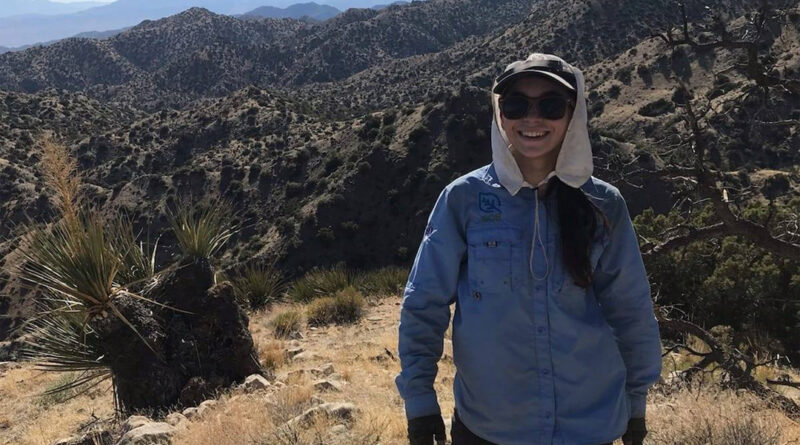How many 18-year-old women do you know who have hiked the entire 2,193-mile Appalachian Trail all by themselves? I didn’t know of any. Then, I met Leah Rubin of Pikesville. She did it in 2016.
“I’d just always wanted to do it,” says Rubin, now 23. “It was a great experience for me. I think I learned a lot doing it right out of high school. I learned how to take care of myself for the most part and challenge myself in new ways that I wasn’t expecting.”
But that’s old news. Since returning from that 5½-month trip, Rubin graduated from the University of Maryland, Baltimore County, where she majored in environmental science. She has continued to pursue her interest in the field.
Rubin says environmental science — which encompasses ecology, biology, zoology, geology, soil science and more —was a good mix of the things she loves.
“I’ve always enjoyed working outside and being outside and going camping and things like that, but I also really enjoy the sciences,” says Rubin. “I really had fun when I took engineering in high school. I thought environmental science was a happy medium since I get to do both fieldwork and research.”
During college, Rubin worked at the Baltimore County Department of Environmental Protection and Sustainability as a geographic information systems and field technician intern for about a year. She earned an advanced certificate in GIS from the Community College of Baltimore County in 2019.
Then, Rubin interned with Del. Dana M. Stein (D-11th), vice chair of Environment and Transportation Committee and founder and executive director of Civic Works, a community service nonprofit that operates in Baltimore’s neighborhoods. Unfortunately, Rubin’s internship was cut short by the pandemic.
Nowadays, Rubin, a graduate of Krieger Schechter Day School and Pikesville High School, is an AmeriCorps volunteer in the Joshua Tree National Park in southern California’s Mojave Desert. She lives in a small town outside of the park called Twentynine Palms.
“My official title is invasive plant and restoration,” says Rubin. “Most of my work has to do with those two things. I go and I do something called EDR, which stands for early detection and rapid removal. So I will go hiking around the park either on trails or canyons, and we’ll look for early stages of invasive plants and we’ll try and map them or record them and then remove them, if possible. Then, we’ll look at everything we’ve collected and we’ll decide what areas we can treat, whether that be through hand-pulling, clipping or herbicide application.”
Rubin is also responsible for ecological restoration. “We have a few areas in the park that have been restored by our greenhouse workers,” she says. “They grow plants from seeds that they collected in the park and then they grow them in the nursery for a couple of years.”
After that, says Rubin, the plants are replanted and watered on a biweekly- to-monthly basis for an additional two years.
“Then, we monitor their survivorship ratings for another two years,” she says. “So every now and then, I will go out with a big water trailer and water a bunch of plants, or I’ll go and look at them and see their survivorship ratings.”
Rubin says she has also been assigned the job of “rare plant monitoring. “We have several rare plant species. Mostly in the spring, we look at rare plant populations and monitor the phenology, which is their reproductive cycle to see if it’s seeding or flowering or dormant. There are a few sites that we monitor year-round,” she says.
Joshua Tree National Park is known for its beauty, but the park has not been spared from the ravages of the southern California wildfires. For example, the Dome Fire in the Mojave National Preserve burned 43,000 acres and more than a million Joshua trees in August of 2020.
Wildfires bring invasive plants, so Rubin says she has her work cut out for her. She says that, in and of itself, fire should not be a problem “because a lot of California ecosystems are fire-adapted, and they need fire to reproduce. The issue that’s happening right now is through sustained poor management practices by settlers and displacement of Native American people, we’ve repressed fires for long enough that there’s been a large buildup of fuels over decades. Now, they’re just too intense and they’re burning all of the microbes in the soil and potential seedlings that could have arisen from a fire.”
Rubin’s internship will end in a couple of months at which time she will enter the job market. Her goal is to find a position with the federal government where she hopes to focus on vegetation.





